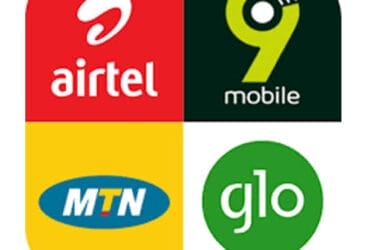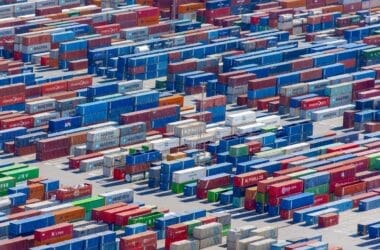Debates about the decline of newspaper readership have far too often focussed on the “problems” created by the Internet. In fact, the decline of print newspapers began more than a half-century ago; most developed economies in the West saw newspaper circulation peak in the 1970s.
It is generally agreed that most of this decline was due to competition–first from broadcast TV, and then cable news. When TV became widely available, readers no longer had to wait 24 hours for the next morning paper. Instead, on-demand, live news became the norm. This trend that was further enhanced by the rise of the Internet, which allowed rival news sources to compete on a day-by-day basis with the local paper.

Google Chief Economist
While the Internet has no doubt contributed to some degree to the decades long decline in newspaper circulation, in today’s debates it seems to bear a disproportionate amount of the blame. However, unlike the media that preceded it, the Internet may in fact represent the newspaper industry’s best chance to reinvent itself, providing opportunities for greater distribution and discovery of articles, as well as substantially enhancing newspaper revenue.
Consider that over half of the cost of a newspaper’s production today is in printing and distribution. As a good rule of thumb, the cover price of a physical newspaper in Europe pays for its production and distribution, while the editorial costs are covered by advertising revenue. These production and distribution costs are essentially eliminated by moving to online distribution, leaving more funds to contribute to the critical editorial functions.
Furthermore, once news is online, it can be indexed, accessed, and linked to easily, anytime and anywhere. This means more people can access the news, and view the ad impressions along with the news stories, generating revenue for the publisher. Google is a powerful force in this value chain, sending over 6 billion clicks per month to news sites around the world, generating hundreds of millions of euros in ad revenue.Of course, greater discoverability also means greater competition. A newspaper can no longer rely on a regional monopoly but must compete with other sources of news. To survive in this new era, newspapers must produce a highly-engaging online experience for the reader–and, at the same time, must confront some stark facts around the differences of online and offline engagement. Subscribers to physical newspapers spend about 25 minutes a day reading their papers. In contrast, the typical time spent on an online news site in the US and UK is about 2-4 minutes per day, roughly one-eighth as much. Interestingly, newspapers also make about one-eighth of their ad revenue from online ads. If readers spent as much time reading the online content as the offline content, ad revenue from online content would rise to something much closer to the offline revenue.The crux of the problem then is not, as is often said, simply about finding new ways for newspapers to make money. It is fundamentally about how to increase reader engagement on news publishers’ sites.
Luckily, online news can be a rich reading experience. Ideally, it can provide the emotional immediacy of TV along with enhanced interactivity, custom content, and the analytic depth of the printed word.
New devices can help deliver these capabilities to readers. According to a recent Pew Foundation study, 64% of tablet owners access news on their tablets. If you look at the time-of-day pattern of online news readership on desktop device, you will see that use is concentrated around business hours. People glance at the stock prices, the sports scores, or the headlines between tasks, at coffee breaks or during lunch. Reading news on desktop computers is to a large extent a labor time activity.
The pattern for mobile phone access to news is spread more evenly throughout the day. People exhibit the same episodic consumption of the news on their mobile devices during work hours, but also browse the news during news and cafe visits.
Tablet use shows a rather different pattern: it peaks in the morning and evening hours. This is because tablets are primarily used for leisure-time reading— they show the kind of reading patterns that we have traditionally seen with print newspapers. A reader armed with both a mobile phone and a tablet becomes the ideal news reader–someone who glances at the headlines during the day, and then digs in for an in-depth analysis during his or her free time in the evening.
Proposals to make it more difficult for readers to scan the headlines, the sports scores, and the finance pages are bound to hurt, not help, newspapers. Such moves would ultimately lead to less engaged readers.
Rather than fight the Internet, the newspaper industry would benefits more by playing to its strength of enabling access anytime anywhere. If newspapers focus on creating great content, and make sure that readers can find it, they can increase engagement, enlighten their readers…and make some money in the process.
Hal Ronald Varian (born March 18, 1947, in Wooster, Ohio) is an economist specializing in microeconomics and information economics. He is the Chief Economist at Google and he holds the title of emeritus professor at the University of California, Berkeley where he was founding dean of the School of Information.[1] He has written two bestselling textbooks Intermediate Microeconomics, an undergraduate microeconomics text, and Microeconomic Analysis, an advanced text. Together with Carl Shapiro, he co-authored Information Rules: A Strategic Guide to the Network Economy and The Economics of Information Technology: An Introduction
As an Amazon Associate, TechCity may earn a small commission if you shop these products.

















Some good points here.
It should be observed that cost reductions that are not proprietary lead to industry-wide cost reduction, and benefit the consumer, not necessarily the industry. Therefore the removal of production and distribution costs, because they are industrywide, do not in the long run help any particular newspaper, though it is good for the consumer as the average cost of newspapers would reduce.
On the revenue side: increasing reader engagement is not quite, in my view, the “crux” of the matter, although that is probably the main problem facing the newspaper executive trying to keep his head above water, and a great driver of revenue for Google et al. The bigger picture is a transition from a world in which information was scarce and therefore expensive, to one in which information is virtually free.
Newspapers will therefore have to transit from being paid to find and provide scarce information to being paid to help organize and contextualize excessive information. The “curation” movement and it’s effects on newspapers and blogging is a pointer to this future. And it also indicates why search engines like Google are already usurping the traditional role of newspapers in many ways…